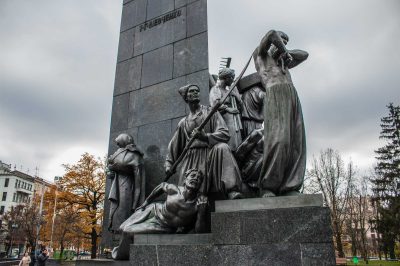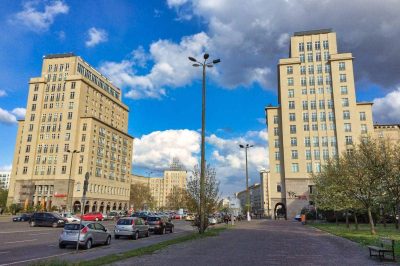When Yuri Gagarin became the first human to launch a rocket into space on April 12, 1961, orbiting the Earth in 108 minutes, it came as a shock to the United States, which believed in its superiority. After all, it was a Soviet citizen who conquered the cosmos. But what hardly anyone knows is that this technical feat was made possible by a Ukrainian. Under the leadership of Sergei Pavlovich Korolev, the Soviet Space Bureau developed several rockets at once that traveled into orbit. Mankind owes the most important achievements of the Soviet space era to him. The technical genius is commemorated in his birthplace of Zhytomyr. We will go with you on a search for traces.
Early years in Ukraine
Sergei Korolev was a native of Shytomyr, which at the time of his birth in 1907 still belonged to the Volhynia Governorate of the Russian Empire. He was born into the family of Russian teachers Pavel Yakovlevich Korolyov and Maria Nikolaevna Balanina. His parents separated when he was already three years old and he was taken to live with his grandparents in Nizhyn, now in Chernihiv oblast in Ukraine. The merchant family also had Greek roots and his ancestors belonged to the Cossacks.
Later, the family moved on to the port city of Odesa. Here, in 1923, his interest in flying began in a gliding club. In 1924, he constructed his first flight here before moving to Kyiv in 1925 to begin studies at the Polytechnic until moving to Moscow in 1926. At first, he was still building airplanes until he was assigned to develop the first rockets in the 1930s. In 1934, he also wrote a study called The Rocket Flight to the Stratosphere, in which he first discussed the possibilities of space flights.
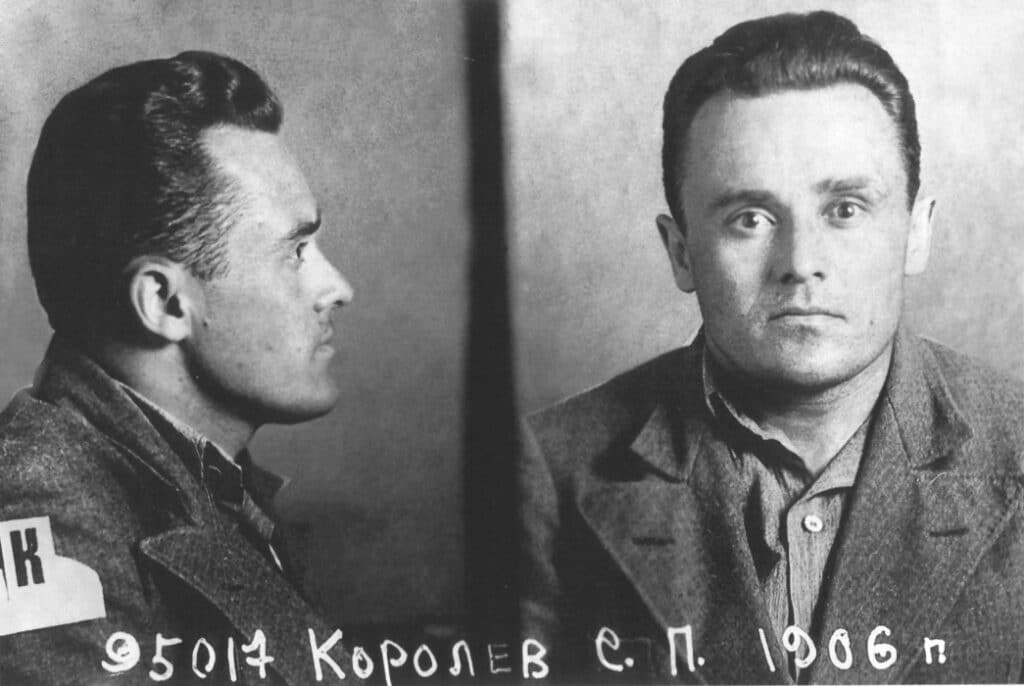
Imprisonment during the Great Terror
Like many other Soviet citizens, he was arrested by the secret police NKVD in September 1938. Previously, a colleague had denounced him under torture. In Stalin’s time, millions of citizens in the Soviet Union were deported to the gulags of Siberia. At the intervention of his mother and colleagues, he was transferred and sent to the special camp ZKB-29 for scientists and engineers. The living conditions in this camp were described by the Nobel Prize winner for literature Alexander Solzhenitsyn in the novel In The First Circle.
In the Gulag, he and other imprisoned designers developed aircraft such as the Tupolev Tu-2. He later requested a transfer to Kazan, where he helped equip the Petlyakov Pe-2 multirole aircraft with a switchable rocket engine. Only in 1944 was he released from imprisonment in the Gulag. He was rehabilitated in 1957 under Khrushchev. His Soviet biographer remained silent about his time in prison due to censorship.
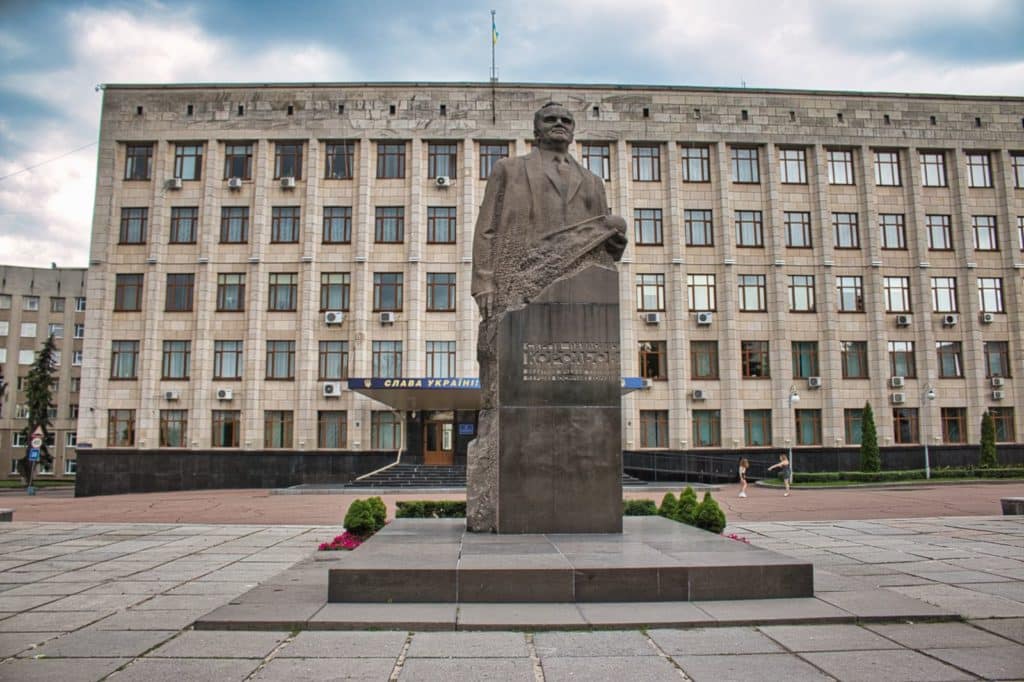
Sergei Korolev as chief rocket engineer
After the end of World War II, he was sent to Berlin to the Soviet headquarters. There he was to round up the remnants of the members of the German rocket-building program. Under Wernher von Braun, Hitler’s Germany had researched and tested rockets at Peenemünde at Usedom island, among other places. He returned to the USSR with the construction plans in 1946. Based on them, the R1 was developed, which was based on the principle of the Aggregat 4 (also called V2) and accordingly looked similar to it.
Development during this period took place mainly in the city now named after Korolev near Moscow and on an island in Lake Seliger. He developed not only the R2, which was the first to have a capsule and in which the main body detached upon re-entry into the atmosphere. He also designed the first intercontinental ballistic missile, the R7. It is the basis of the Soyuz rockets still in use today.
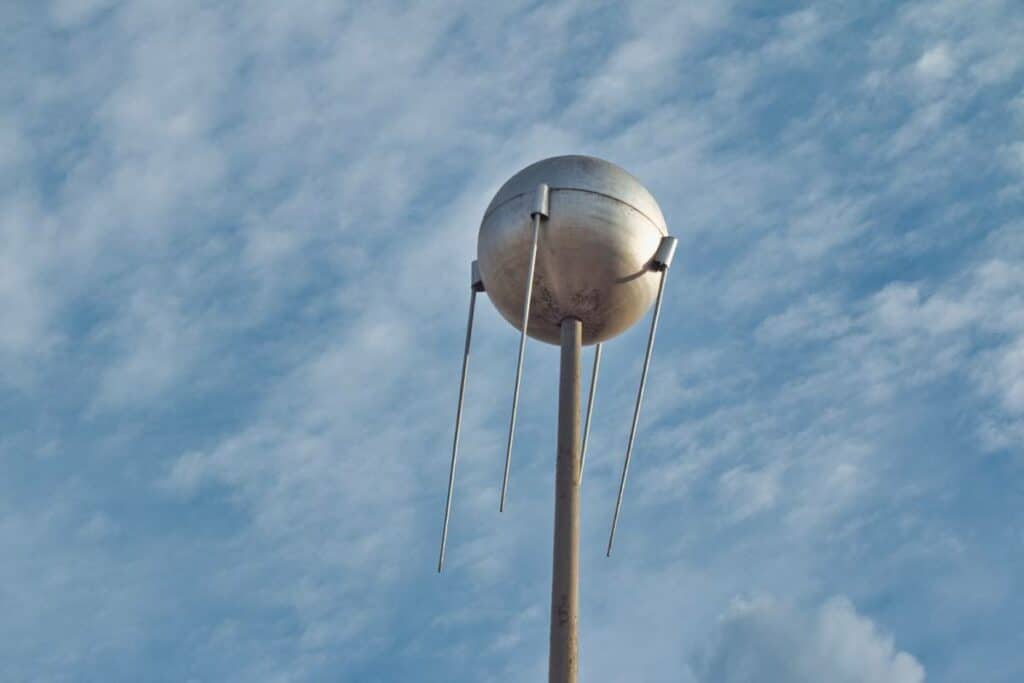
Under Korolev the Soviets beep the West into terror
The decisive breakthrough in space travel was achieved by the Soviets in 1957, even before the Americans. The first intercontinental flight of a rocket took place on August 21, 1957. The R7, which was developed under Sergei Korolev, flew 6400 kilometers. Then, on October 4, came the launch of Sputnik, which was the first satellite to be shot into orbit. It was an enormous propaganda success for the Soviet Union. It radioed from space and caused horror in the West. Sputnik 2 followed on November 3.
The Soviets had won the space race and could even reach the USA with nuclear armed missiles. In many of the countries on our blog, the word Sputnik is still synonymous with satellite. In the Soviet Union and the “brother states” the success of the space program was exploited and a real space mania was triggered. Science fiction, especially concerning the cosmos, became popular. Magazines, books and television brought the subject into people’s living rooms. This effect continued for many years.
Yuri Gagarin becomes the first man in space
The hysteria became even greater on both sides when Korolev and his team succeeded in sending the first human into space, Yuri Gagarin. On April 12, 1961, Gagarin was in space for exactly 108 minutes, but the effect of these minutes could hardly have been greater. For the Soviet Union, it was the greatest success in its space history, perhaps even in its entire existence, apart from the victory over Nazi Germany in World War II.
To this day, cities, neighborhoods and streets all over the former Eastern Bloc countries are named after Yuri Gagarin. Monuments have been erected to him. His name is less captious even for the states that have broken with the Soviet legacy, such as Ukraine, and therefore even here to this day there are streets named after Gagarin.
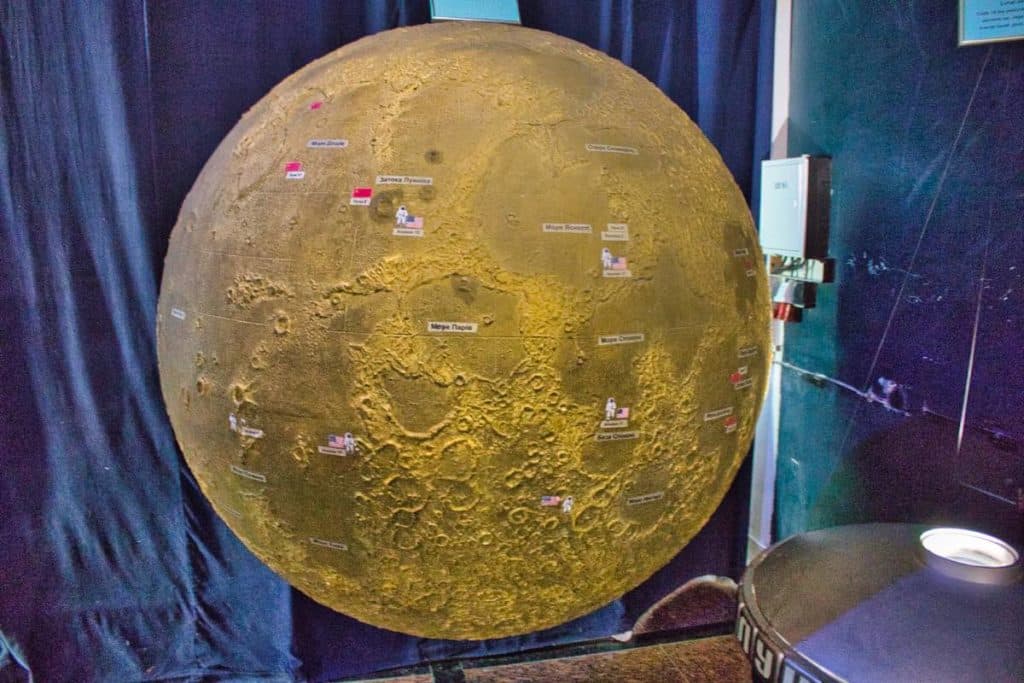
Korolev as Mister X of Soviet spaceflights
Admittedly, only a few places are named after Korolev, although his influence and his decades of work and research are actually incomparably more significant than the 108-minute flight. But unlike Gagarin, who was primarily intended to serve as a propaganda role model, the Soviet Union kept Sergei Korolev’s name a secret until the very end. In the United States, he was known among rocket scientists only as Mister X. Korolev died in 1966 from complications during an operation to remove a tumor. A jaw anomaly sealed his death. He had contracted it from the disease scurvy during his imprisonment in the gulag.
The Soviet authorities kept silent about these causes of death, as about many things in the life of Sergei Korolev. After the launch of Sputnik, the Nobel Committee even asked Soviet leader Nikita Khrushchev who had built the rocket. Khrushchev replied that it was the merits of the Soviet people. Korolev was buried at the Kremlin wall. But the Soviets lost the race for the first manned moon landing without him.
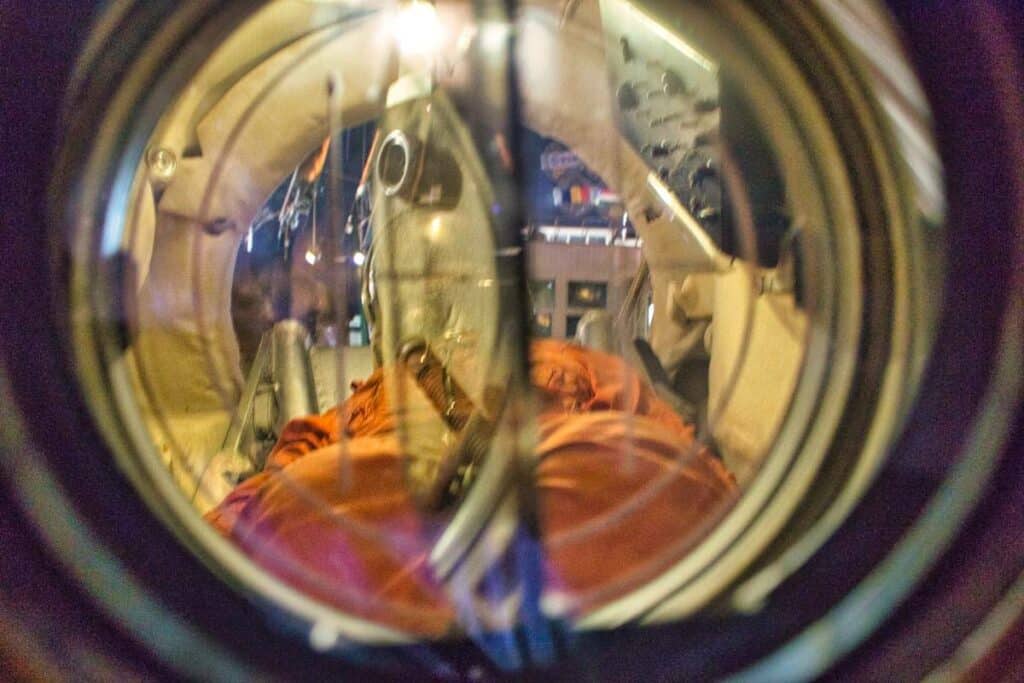
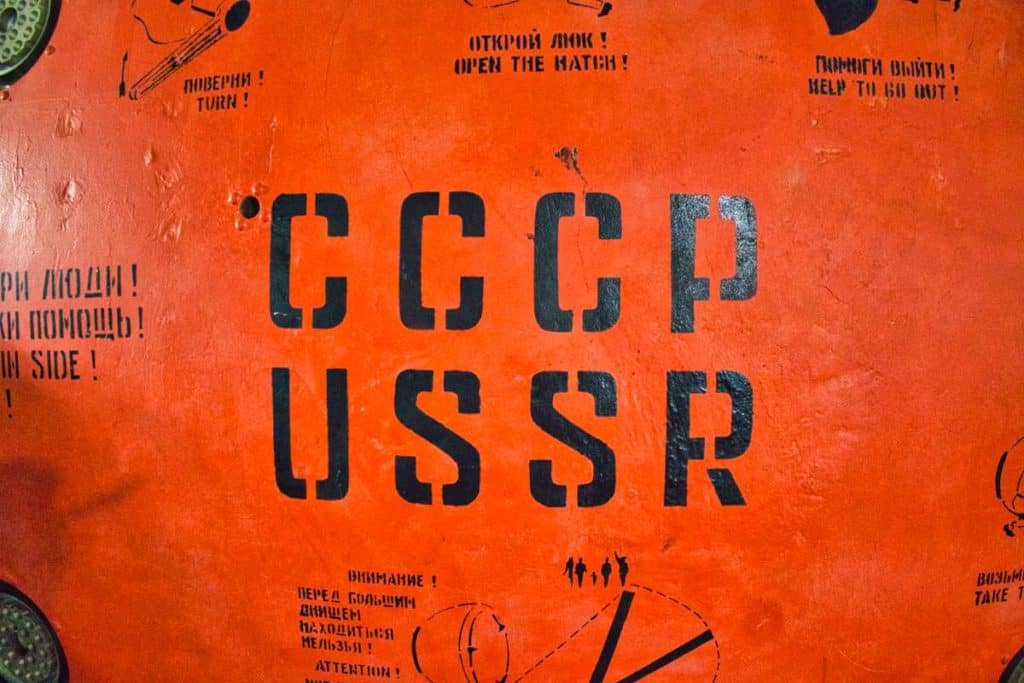
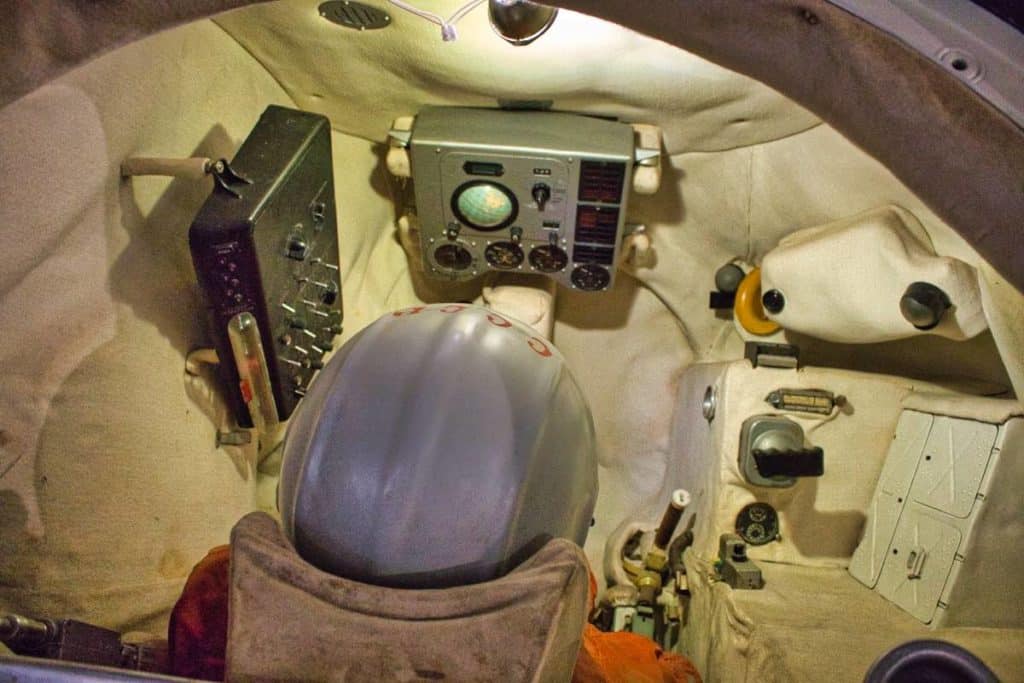
Sights related to Sergei Korolev
Even though Korolev did not receive any appreciation in the world or even in the Soviet Union during his lifetime, this was at least partially made up for after his death. Therefore, there are also some landmarks associated with his name.
Birthplace of Sergei Korolev in Shytomyr
Even though Korolev spent only the first three years of his life in Zhytomyr, he was born here. His birthplace still stands today, and there is an exhibition here devoted specifically to the life of the man who took the Soviets into space. Among other things, there are photos of Korolev together with Yuri Gagarin.
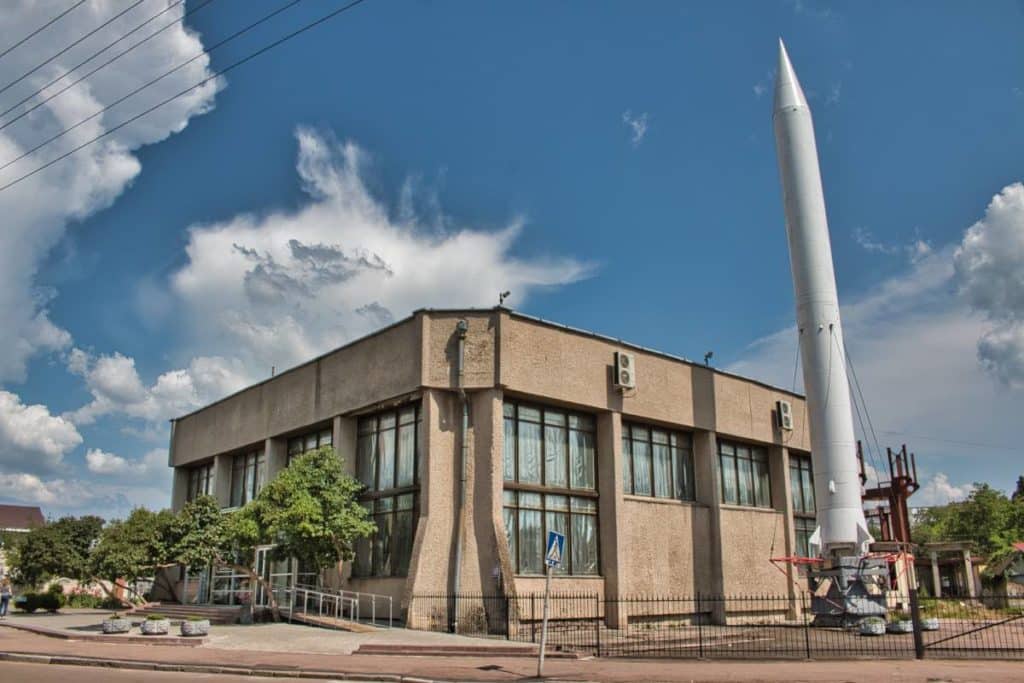
Sergei Korolev Museum of Cosmonautics Zhytomyr
However, the most significant sight associated with Korolev in his birthplace is the Sergei Korolev Museum of Cosmonautics. The exhibition features some of the most important achievements of Korolev and later Soviet spaceflights. Exhibits include space capsules, such as one of the Vostok-1 type in which Yuri Gagarin flew into space in 1961.
Monument to Korolev in front of Zhytomyr oblast administration
In front of the building of the administration for Zhytomyr oblast there is a monument to Sergei Korolev (see cover photo), which also commemorates the pioneer and chief developer of space travel.
City of Korolev near Moscow
Korolev as a city was named after Korolev after his death. The Mission Control Center of the Russian Space Agency and its administration are also located here. The city’s industry is also largely focused on space travel.


